Mughal-E-Azam Conquers the South Asian Diaspora in America
Face to Face with Feroz Abbas Khan
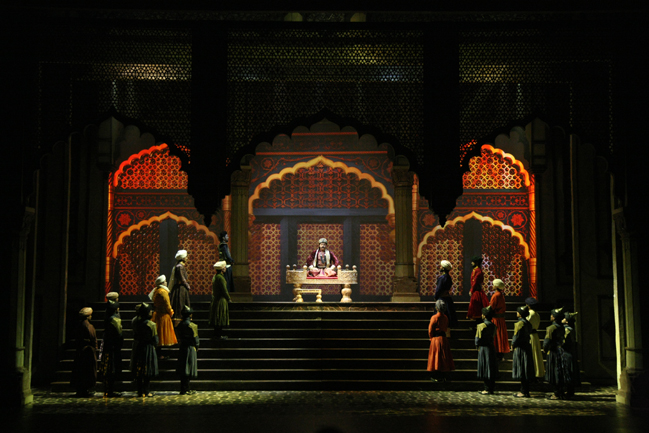
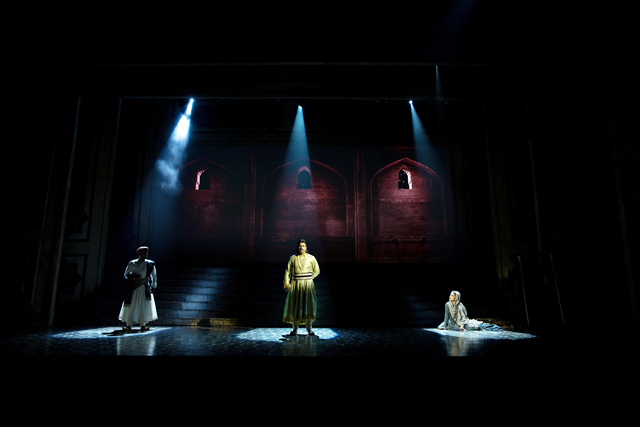
If you are from South Asia or its Diaspora, the word ‘Mughal-e-Azam’ will definitely resonate with you. It is the name of one of India’s most iconic films, an unforgettable tribute to love, by K. Asif. It took many years and heartbreak to make but remains a masterpiece of Indian cinema, telling a tale of forbidden love, passion, rebellion – and duty. It had originally started out as a play ‘Anarkali’ in 1922 and now this epic is once again being presented as theater in India, Dubai and now in the USA. In New York, it ran in the prestigious David Koch Theater at Lincoln Center and offered a live sneak peek in Times Square. Having had a successful run in Atlanta, Mughal-E-Azam moves to New Jersey next.
A believe it or not factor – the original magnum opus and now the musical are both produced by the same person – a Parsi gentleman by the name of Shapoorji Pallonji who never got involved in any other artistic venture. Mughal-E-Azam – the Musical is produced by Shapoorji Pallonji Group and directed by Feroz Abbas Khan.
Mughal-E-Azam is in a class by itself – with its magnificent choreography, music and stage sets, it is like a Broadway show on Steroids. What have been the special challenges of bringing such a huge show to not one but several major venues across America? “Bringing Mughal-e-Azam, the first Indian Broadway Musical, to multiple major venues across America has indeed been a monumental undertaking, “ says Aanand Dawda, the executive producer of the show: “The sheer scale of the production, with its opulent sets, intricate costumes, and grand musical numbers, presented unique logistical challenges. Ensuring seamless coordination while maintaining the artistic integrity and delivering a consistent top-notch experience in each city required meticulous planning and a dedicated team.”
What has been striking is the appeal across generations as ‘Mughal-E-Azam has a collective hold on the Indian memory – parents and grand-parents have fond memories of seeing the original film and now want to pass on those experiences to their Indian-American children. The, film – and now the musical – has appeal to all South Asians, be they from Pakistan, Bangladesh or Nepal because of its rich music and choreography. At shows it was impressive to see entire families watching together and being enriched by it.
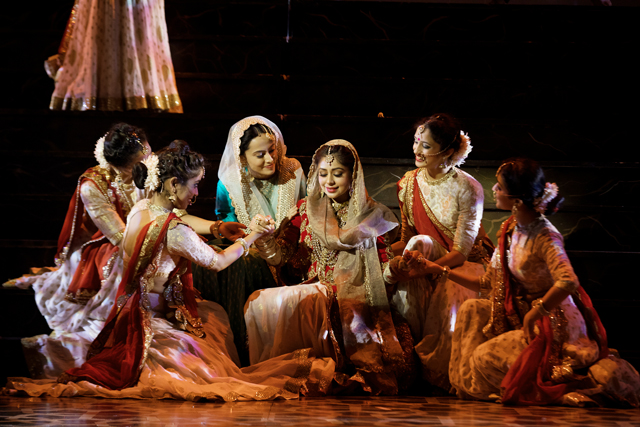
Mughal-E-Azam had been getting rave reviews not only in India but in every American city it has gone to so far, because the caliber of the performers and the sets is so high. It is hard to believe the highly skilled dancers are also accomplished singers who are singing live while doing these challenging dance numbers. Kudos to the cast and crew, especially Priyanka Bharve /Neha Sargam who play Anarkali and Rupsha Mukherjee/Aashima Mahajan who play the courtesan Bahar. Each of them has a distinct rich voice which adds dimension to the performance.
The ornate costumes, breathtaking in their range, embroidery and colors are all designed by Manish Malhotra. The wonderful choreography by Mayuri Upadhya sets the mood of the entire evening and the Kathak dancers are excellent. The imaginative stage sets including the Sheesh Mahal, are by Neil Patel who is a noted name on Broadway.
Finally, an unseen hand which had an impact on every minute of the immaculate evening of perfection is that of noted playwright Feroz Abbas Khan whose vision made it all possible and whose intense rehearsals made it all flow flawlessly.
After each show, the huge audiences erupted into applause and took their own images with the performers, sporting the feathered and jeweled caps of the courtesan dancers on their heads. Striking dance poses for the camera and laughing and taking selfies, they were, for one memorable moment, a part of Mughal-E-Azam which was a part of their past on another far-away continent, a homeland which still called out to them.
“The show is not only a celebration of our rich cultural heritage but also a testament to the global impact of Indian performing arts,” says Dawda. “By witnessing this grand spectacle, audiences can connect with their roots, experience the magic of Indian theatre, and pass on this cultural legacy to the next generation. Mughal-E-Azam serves as a bridge between our past and present, creating a sense of pride and fostering a deeper understanding of our artistic traditions.”
Face to Face with Feroz Abbas Khan
The Man Behind the Magic of Mughal-E-Azam
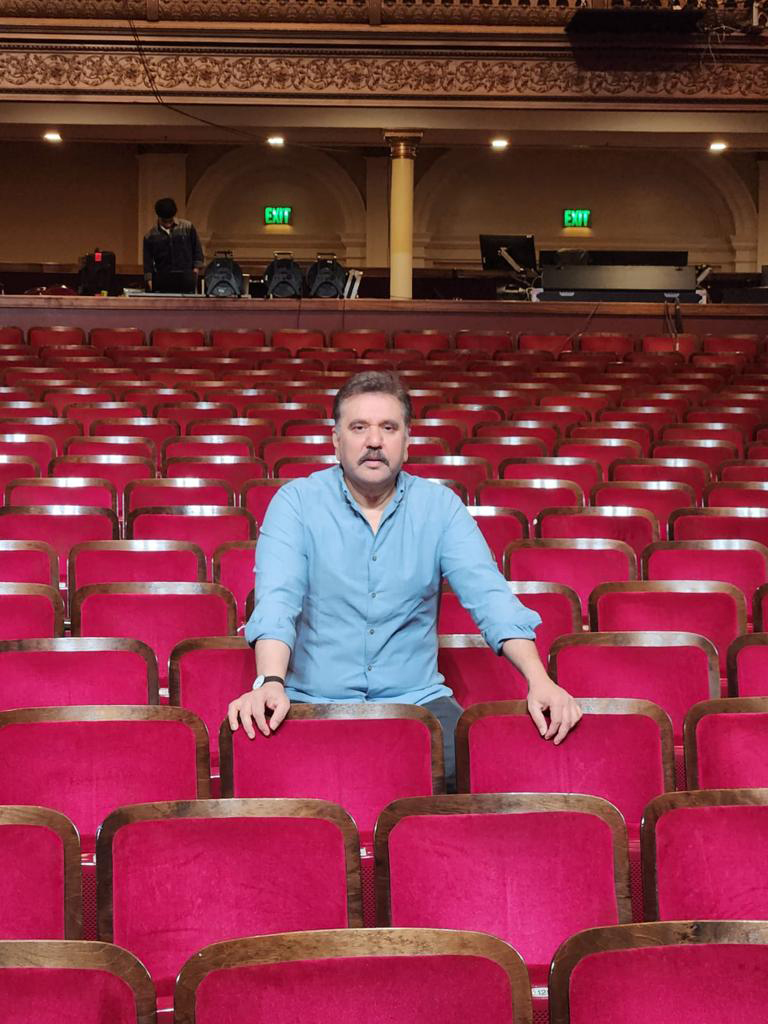
“When a performance unfolds on stage, there is a certain magic in the air, a palpable synergy between the actors and the audience that is almost divine.”
– Feroz Abbas Khan
1. When did your love affair with Mughal –E-Azam start?
It began when I first saw the film in my teens. These were formative years and I was still discovering my love for the arts, my passion for cinema. This film continues to represent to me, the very peak of a rich cinematic experience as it had everything. Dazzling song and dance sequences, unforgettable characters, splendid production values, a deep emotional core and dialogues that kept echoing in my mind for years. When the coloured version came out in 2004, I saw it with new eyes. I saw its complex thematic structure, the elements of theatre it had woven in the narrative and began to think about adapting it to stage.
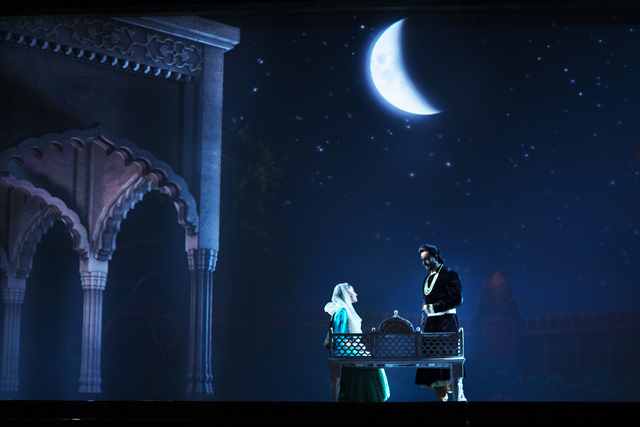
2. What are your memories of K.Asif’s Mughal-E-Azam?
When I first saw the film, I remember feeling deep sorrow and empathy for Anarkali and felt that a great injustice had been done to her. And of course, the richness of its production values and its grand performances impacted me deeply. Its two technicolour scenes dazzled my senses and continue to do so till date. With all the technical expertise we have today, it is hard to match what K Asif did over 60 years back.
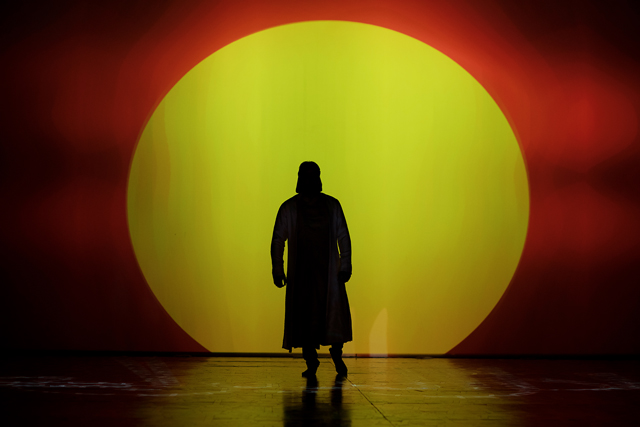
3. Was it intimidating to bring a Dilip Kumar and Madhubala epic to the stage? It must have been even harder because Dilip and Madhubala never had to actually sing – but your actors had to be good singers too. How did you choose your actors?
It would have been rather unrealistic to even think of finding actors who could achieve what Dilip Kumar and Madhubala did in ‘Mughal-E-Azam’. However, after extensive auditions we did find actors who could with convincing passion, play Salim and Anarkali. And who not only had the acting chops needed for their roles but also proficiency in singing. We have simply tried to pay homage to K Asif’s vision and done our best to make it accessible to a new generation of audiences.
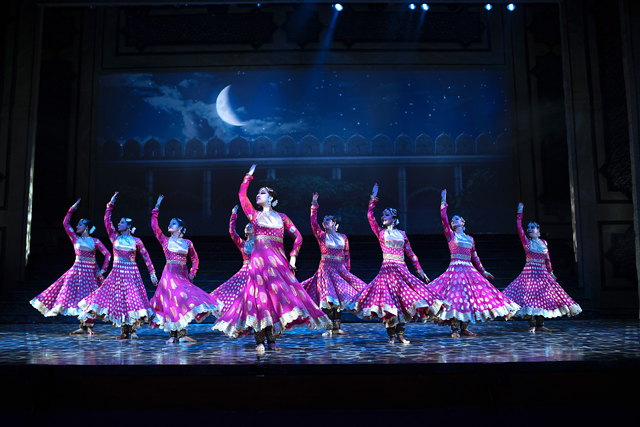
4. How did you meet the many challenges of casting, music, choreography and stage sets?
As I mentioned before, the casting was done via countless auditions. Finding protagonists who can match the stature of Madhubala, Dilip Kumar and Prithviraj Kapoor was impossible. However, we were lucky enough to find actors who understood the enormity of the brief and poured themselves into their parts. It was very challenging to find actors who could play Anarkali and Bahaar as they had to be beautiful, proficient in acting, singing and dancing. The other problem was finding talented people, who were willing to make a long commitment to rehearsals and long tours. The sets and choreography could not have mirrored the film exactly due to logistical constraints. Still, we have managed to use the film as a reference and with the help of technology and stagecraft, have created a world that is immersive and rich.
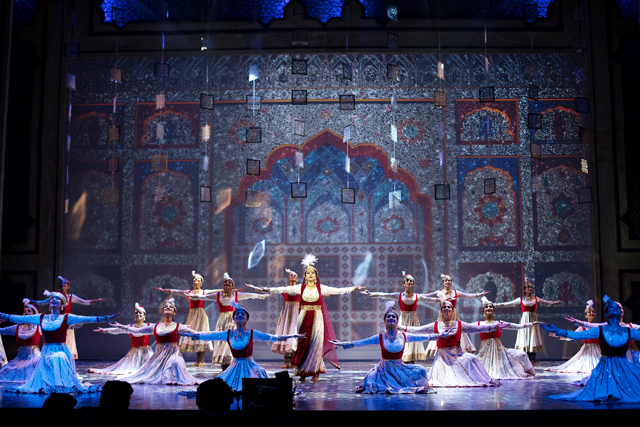
5. You have made it a truly global production – how did you select the talents for stage sets, lighting and technology.
Well, to capture the grandeur, musical richness and the production values of a classic like ‘Mughal- E- Azam’, we had to assemble professionals who were at their artistic and creative peak. Manish Malhotra came on board and took on the monumental task of designing elaborate costumes for the entire cast. Mayuri Upadhya reimagined the choreography with hundreds of Kathak dancers. She is the star of this show.The atmospheric lighting was created by David Lander, John Narun made some stunning projections, Neil Patel did the scenic design and Piyush Kanojia recreated the haunting music. and we have the best sound and technical crew in the business.
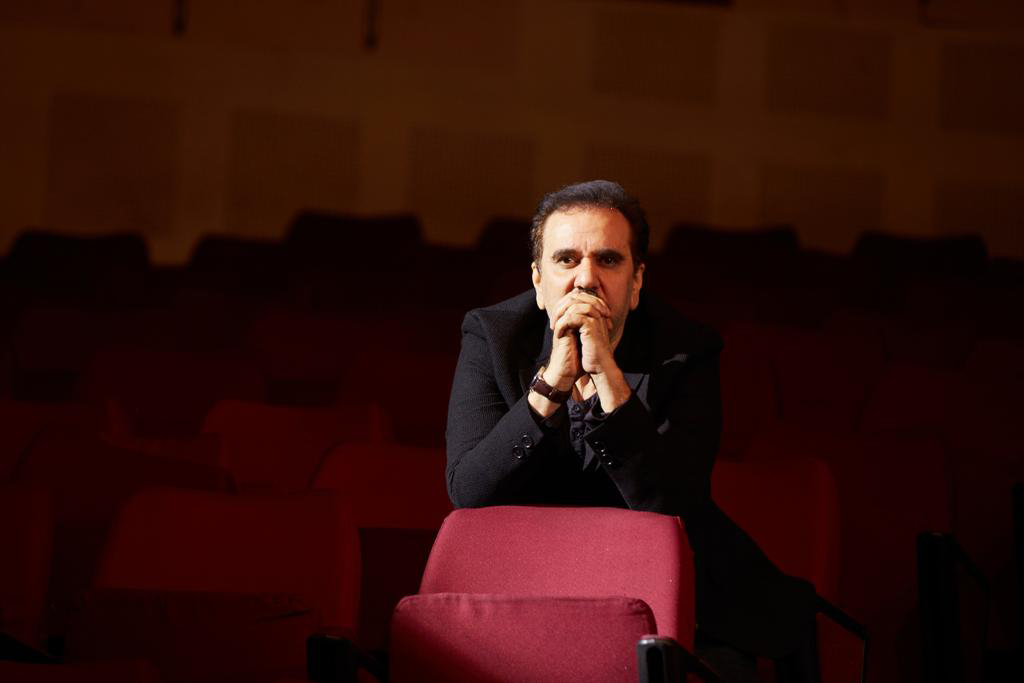
6. What got you through your ups and downs and took you to success?
Everyone’s idea of success is different. For me, it is the pursuit of meaning and creative fulfilment. Compared to cinema and television, theatre pays far less and hence is not a preferred career option for many artists but I have always gravitated back to it because it feels like home to me. It is where I can tell the stories I want in the manner that I want and I have given up a lot of things to be able to do this.
I have done cinema and television but my place is in theatre. In theatre, you may not become too wealthy but what it does give to you is incomparable. When a performance unfolds on stage, there is a certain magic in the air, a palpable synergy between the actors and the audience that is almost divine. So yes, there may be ups and downs but as long as you remember what truly matters to you, you will get by. And even thrive!
7. Where does the show go next? Is there an end to it or will the show become a constant traveling show?
Well, right now we are focussed on the US tour of ‘Mughal-E-Azam: The Musical’ and will take a call about where it will go next. We have performed in various cities around the world since the premiere show in Mumbai way back in 2016 and attracted a diverse audience from different parts of the world. There is no dearth of touring opportunities but ultimately, the decision to continue touring will depend on a variety of factors, including the availability of the cast and crew, the financial viability of the show and other logistics as it is not easy to travel with large containers of production paraphernalia.
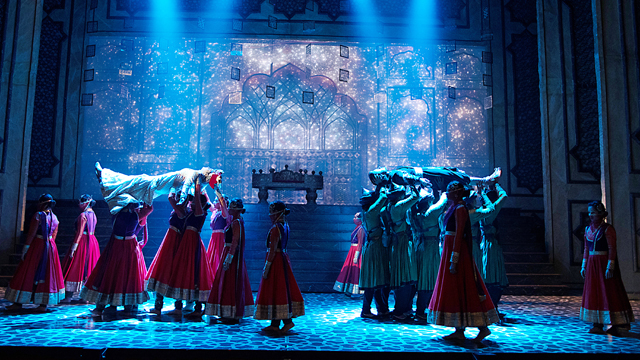
8. What has been the biggest satisfaction for you in making Mughal-E-Azam a reality?
Well, it has been a joy to bring an epic alive on stage for a new generation and to see young people resonating with the music, the dialogues, the themes of dissent and rebellion and even the love story that was filmed over 60 years ago. We did not however arrive at this point of creative fruition overnight. The idea of distilling ‘Mughal-E-Azam’ to about 50 scenes or thereabouts, capturing its monumental scale, the realism of its war scenes, the intricacy of its music and choreography and most of all the histrionics of its three legendary protagonists seemed unfeasible.
This was a massive undertaking that was made possible because Shapoorji Pallonji, the original producers of K Asif’s dream project, came on board and made our dreams come true. Deepesh Salgia as producer has been a huge driving force to take on this massive challenge of performing in North America to perform with a cast and crew of almost 150 people. I feel a great deal of satisfaction because we have not created a pale replica but a quality production with reimagined music, choreography, elaborate sets and costumes that capture the grandeur of the Mughal era. I am also happy that the audiences and critics around the world feel the same way and have praised the musical for its visuals, performances and the transportive theatrical experience it provides.
9. Do you think Indian content can make it to Broadway – any plans to bring shows here?
The show is on par with any Broadway musical if I may say so and where it will go next is a decision that will be made by the production team and the organizers.
10.Your most memorable experience in reaching a global diasporic audience?
There have been countless experiences. The flash mob performance of ‘Pyar Kiya To Darna Kya’ in Times Square has gone viral and it is very fulfilling to see fans across the US lining up for tickets. When they come out of the venue after a performance, some have tears in their eyes and others say that they were transported back to India. In Dubai as well, I have received the most amazing feedback. Here, people from various countries come in droves to watch the play and deeply connect with the story and the music. Be it Times Square or Dubai or Vancouver, the musical brings people together and creates a shared experience that transcends cultural and geographical boundaries. That for me, is the most rewarding part of this whole journey.
